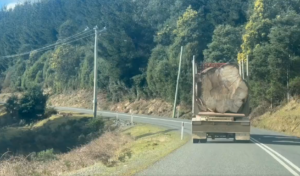Share
The Australian native forest sector has been in decline for the past two decades and all but fallen off a cliff since the onset of the global financial crisis in late 2008. The forestry lobby has tried to lay the lion’s share of the blame for its predicament at the feet of the environmental movement, claiming that increases in forest reserves and campaigning in Japan have restricted its access to logs and stifled demand. But the problem with the tale spun by the industry is that it requires the suspension of reality. Basic economic principles suggest that when the supply of a product is restricted, its price will rise. This was vividly illustrated in the aftermath of Cyclone Larry and Cyclone Yasi in 2006 and 2011. Both cyclones caused extensive damage to banana plantations in Queensland, triggering sharp increases in banana prices. In contrast to this standard market response, the restrictions imposed on the Australian native forestry sector since the mid-1990s have not resulted in an increase in the price of native hardwood products.
Related documents
Between the Lines Newsletter
The biggest stories and the best analysis from the team at the Australia Institute, delivered to your inbox every fortnight.
You might also like
Have your say in the EPBC Act review of salmon farming in Macquarie Harbour
The Australia Institute Tasmania’s work was critical to triggering the federal EPBC review of salmon farming in Macquarie Harbour.
Funding and transparency needed for Tasmania’s long-overdue State of the Environment report
Leading organisations have warned that Tasmania’s first State of the Environment report in almost 15 years will not be fit for purpose without an immediate funding boost and increased transparency.
Native Forest Logging in Tasmania: The Facts
Tasmania’s native forests are globally recognised for their unique species and conservation value, as well as being some of the most carbon dense forests on the planet.



